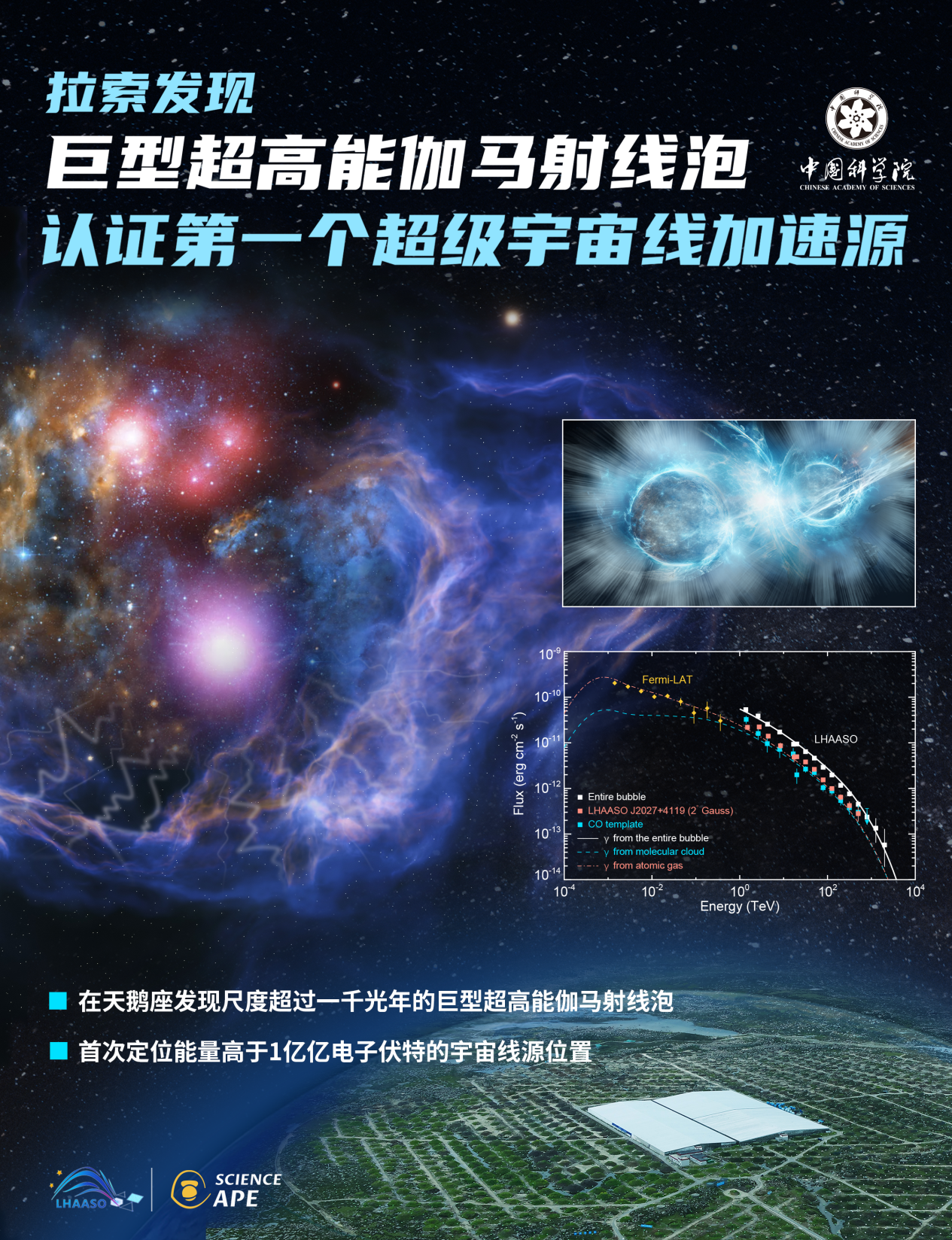

Promotional picture of scientific research results
Cosmic rays, also known as cosmic rays, are charged particles coming from outer space. The origin of cosmic rays is one of the most significant cutting-edge scientific issues in contemporary astrophysics. On February 26, the Institute of High Energy Physics of the Chinese Academy of Sciences announced that Chinese researchers discovered a giant ultra-high-energy gamma ray in the Cygnus star formation region through the High Altitude Cosmic Ray Observatory (LHAASO, "Lasso") located in Daocheng, Sichuan. Bubble-like structure, and for the first time in the world, it was certified as the origin of cosmic rays with energy higher than 1 billion electron volts. The result was published as a cover article in the academic journal "Science Bulletin" on February 26, Beijing time.

Schematic diagram of giant ultra-high energy gamma ray bubble structure simulation

Schematic diagram of massive star simulation
The giant ultra-high-energy gamma ray bubble structure discovered by scientific researchers is about 1,000 light-years in diameter, and the straight-line distance from its core to the Earth is about 5,000 light-years. By studying the interior of the bubble structure, researchers believe that there is a cosmic ray accelerator inside, which is the origin of cosmic rays, and that this originating object is continuously producing cosmic ray particles with an energy of more than 1 billion electron volts. Through studies, the researchers inferred that the massive star cluster located near the center of this bubble structure may be the origin of the cosmic rays they received. The researchers called it the "star association."

Schematic diagram of simulation of ultra-high energy cosmic rays propagating into interstellar space
Through further analysis, the researchers found that the "Star Association" is a dense star cluster composed of many stars with surface temperatures of about 15,000 degrees Celsius to 35,000 degrees Celsius. The radiation intensity of these stars is hundreds or even millions of times that of the sun. Their huge radiation pressure can blow out the surface material of the star, forming a strong stellar wind with a speed of up to 3,000 kilometers per second. The collision of stellar winds with the surrounding interstellar medium and the violent collisions between stellar winds create an extreme environment with strong shock waves, thus forming a powerful particle accelerator. Through analysis, scientific researchers confirmed that this is the source of cosmic ray acceleration, that is, the celestial body from which cosmic rays originate. This discovery is the first of its kind in the international scientific community. In the future, high-altitude cosmic ray observatories will be able to detect more acceleration sources of quadrillion electron volts and even higher-energy cosmic rays, which is expected to solve the mystery of the origin of cosmic rays in the Milky Way.

Schematic diagram of simulation of ultra-high energy gamma ray photons propagating to the earth
The High Altitude Cosmic Ray Observatory (LHAASO, "Lasso") located on Haizi Mountain at an altitude of 4,410 meters in Daocheng, Sichuan is a major national scientific and technological infrastructure with cosmic ray observation and research as its core. The observatory is composed of 5,216 electromagnetic particle detectors, a ground shower particle detector array composed of 1,188 muon detectors, a 78,000 square meter water Cherenkov detector array, and 18 wide-angle Cherenkov telescopes. Composite array. The observatory was completed in July 2021 and began high-quality and stable operation. It will pass national acceptance in 2023 and is the most sensitive ultra-high-energy gamma ray detection device in the world.

Photos of the high-altitude cosmic ray observatory located in Daocheng, Sichuan